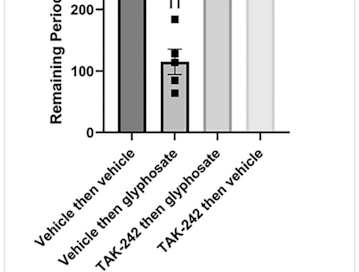#3 Protecting against pesticides in the diet (by drinking Orange juice)
As far as we can tell by studies (that are mostly financed by the agricultural industry so there’s incentive to under report), most foods contain glyphosate at the low milligrams per kg of food on the high end with some outliers going to double digits.
For the U.S. general population, the conservative estimated intake was 0.09 mg/kg/day bodyweight
6mg - 10mg a day which is a pretty high estimate going by food values if accurate. https://ift.onlinelibrary.wiley.com/doi/10.1111/1541-4337.12822
Typically doses studied for toxic effects are higher than what’s found in human urine samples. but even if toxicity is low at typical intakes, consuming more toxic substances on top of a bunch of toxins in the modern era without protection probably isnt a great idea.
some mechanisms of glyphosates damaging effects,
here giving rats 16.9mg/kg glyphosate impaired learning a lot (maybe ~200mg human equivalent). which was fully reversed by a TLR4 antagonist.
https://www.nature.com/articles/s41598-023-44121-7
We also found that LTP, a mechanism of learning and memory, was completely disrupted by preincubation of slices with 4 mg/L GBH, which corresponds 1.6 mg/L glyphosate or roughly 10 µM glyphosate. These finding are well paralleled by our studies using glyphosate itself, which inhibited LTP at micromolar levels (Fig. 2 and Supplemental Fig. 2). This level is higher than concentrations detected in healthy human urine samplesThis study has two important implications: orally administered glyphosate infiltrates the CNS and elevates pro-inflammatory cytokines in the CSF. The aforementioned case of GBH ingestion18 also suggests that GBH may trigger inflammation in the CNS.
Moreover, we observed that TAK-242, a selective TLR4 antagonist, clearly overcomes the effects of glyphosate in both LTP and behavioral experiments, suggesting that activation of TLR4 is pivotal for glyphosate to disrupt the CNSGlyphosate activates microglia via TLR4 and triggers cellular stress to impair hippocampal plasticity and learning
So glyphosate mediates its toxicity largely through TLR4 receptors.
If we want to assume typical intakes have some level of impact here , and want to protect against the brain inflammation / anti neurogenesis property of glyphosate,
Glyphosate protection can be gained via TLR4 inhibitors ,
most effects of daily intake can likely be protected against simply with 1 glass of orange juice daily. Hesperidin in orange juice inhibits TLR4 and has a decently long half life for sustained protection.
In this study giving orange juice to mice fed very high doses of glyphosate helped prevent a large amount of the testosterone drop & oxidative stress markers at 2 and 4 weeks
30ml/kg was given by oral gavage, so this effect was given by ~150ml - 200ml human dose or 1 cup of OJ.
Because they used such an extreme dose of glyphosate it wasn't enough for a fully protective effect. they used daily 2.5 GRAMS human dose every day, but even on this extreme dose it shows good protection.
So with intakes in milligram amounts drinking 1 cup of orange juice daily should protect against most of the harm.





